Frigidaire FFLG3900UW, FFLE3900UW Owner's Guide
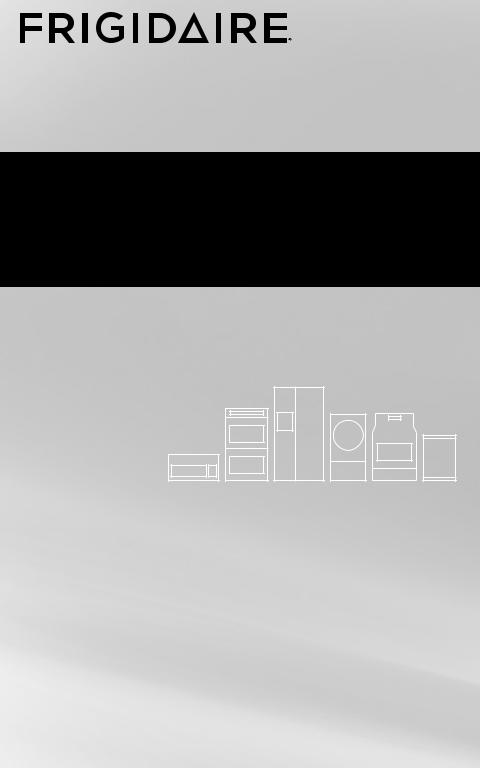
All about the
Use&Care
of your Laundry Center
TA B L E O F C O N T E N T S
Important Safety Instructions...................... |
2 |
Care And Cleaning.................................... |
19 |
Washer Operating Instructions..................... |
7 |
Avoid Service Checklist.............................. |
21 |
Dryer Operating Instructions...................... |
15 |
Major Appliance Warranty Information........ |
24 |
www.frigidaire.com USA 1-800-944-9044 |
www.frigidaire.ca Canada 1-800-265-8352 |
2018) (April A11271202

IMPORTANT SAFETY INSTRUCTIONS
WARNING
FIRE OR EXPLOSION HAZARD
Failure to follow safety warning exactly could result in serious injury, death, or property damage.
DO NOT store or use gasoline or other flammable vapors and liquids in the vicinity of this or any other appliance.
WHAT TO DO IF YOU SMELL GAS:
•DO NOT try to light any appliance.
•DO NOT touch any electrical switch; DO NOT use any phone in your building.
•Cleartheroom,buildingorareaofalloccupants.
•Immediately call your gas supplier from a neighbor’s phone. Follow the gas supplier’s instructions.
•If you cannot reach your gas supplier, call the fire department.
Installation and service must be performed by a qualified installer, service agency or the gas supplier.
NOTE
The instructions appearing in this Use and Care Guide are not meant to cover every possible condition and situation that may occur. Common sense and caution must be practiced when installing, operating and maintaining any appliance.
2

IMPORTANT SAFETY INSTRUCTIONS
Recognize safety symbols, words and labels
Safety items throughout this manual are labeled with a WARNING or CAUTION based on the risk type as described below:
WARNING
Please read all instructions before using this laundry center.
Definitions
 This is the safety alert symbol. It is used to alert you to potential personal injury hazards. Obey all safety messages that follow this symbol to avoid possible injury or death.
This is the safety alert symbol. It is used to alert you to potential personal injury hazards. Obey all safety messages that follow this symbol to avoid possible injury or death.
DANGER
DANGER indicates an imminently hazardous situation which, if not avoided, will result in death or serious injury.
WARNING
WARNING indicates a potentially hazardous situation which, if not avoided, could result in death or serious injury.
CAUTION
CAUTION indicates a potentially hazardous situation which, if not avoided, may result in minor or moderate injury.
Read all instructions before using this appliance. This book contains valuable information about:
•Operation
•Care
•Service
Keep it in a safe place.
This Use & Care Guide provides general operating instructions for your laundry center. It also contains information about features for several other models. Your model may not have every feature included.
Use the laundry center only as instructed in this Use & Care Guide.
Child Safety
Destroy or recycle the carton, plastic bags, and any exterior wrapping material immediately after the laundry center is unpacked. Children should never use these items to play. Cartons covered with rugs, bedspreads, plastic sheets or stretch wrap may become airtight chambers, and can quickly cause suffocation.

 IMPORTANT
IMPORTANT
IMPORTANT indicates installation, operation or maintenance information which is important but not hazard-related.
Product Record
Record Your Model and Serial Numbers
The model and serial numbers of your laundry center are found on the dryer serial plate located inside the door opening. Record and retain these numbers.
Model Number
Serial Number
Purchase Date
Proper Disposal of your Washer/ Dryer
Risk of Child Entrapment
Child entrapment and suffocation are not problems of the past. Junked or abandoned washers/dryers are still dangerous – even if they will sit for “just a few days”. If you are getting rid of your old washer/dryer, please follow the Protect Children section of the safety instructions to help prevent accidents.
SAVE THESE INSTRUCTIONS FOR FUTURE REFERENCE.
3
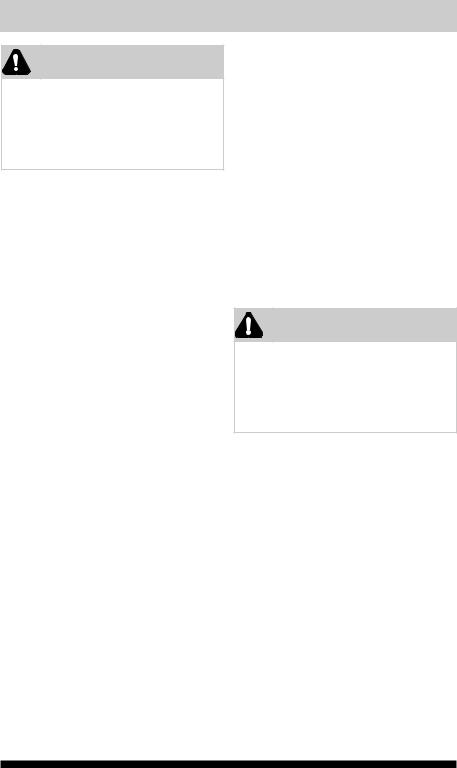
IMPORTANT SAFETY INSTRUCTIONS
WARNING - RISK OF FIRE
To reduce the risk of fire, electrical shock, or injury to persons when using this laundry center, comply with the basic warnings listed below. Failure to comply with these Important Safety Instructions and warnings could result in serious personal injuries or death.
Prevent Fire
•DO NOT wash or dry items that have been previously cleaned in, soaked in, or spotted with gasoline, cleaning solvents, kerosene, cooking oils, waxes, etc. DO NOT store these items on or near the washer. These substances give off vapors or chemical reactions that could ignite or explode.
•DO NOT put oily or greasy rags or clothing on top of the laundry center. These substances give off vapors that could ignite the materials.
•DO NOT add gasoline, cleaning solvents, or other flammable or explosive substances to the wash water. These substances give off vapors that could ignite or explode.
•Under certain conditions, hydrogen gas may be produced in a hot water system that has not been used for 2 weeks or more. HYDROGEN GAS IS EXPLOSIVE. If the hot water system has not been used for such a period, turn on all hot water faucets and let the water flow from each for several minutes BEFORE using the washer. This will release any accumulated hydrogen gas. Hydrogen gas is flammable; DO NOT smoke or use an open flame during this time.
•DO NOT store or use gasoline or other flammable vapors or liquids in the vicinity of this or any other appliance.
•DO NOT place items exposed to cooking oils in your dryer. Items contaminated with cooking oils may contribute to a chemical reaction that could cause a load to catch fire. To reduce the risk of fire due to contaminated loads, the final part of a tumble dryer cycle occurs without heat (cool down period). Avoid stopping a tumble dryer before the end of the drying cycle unless all items are quickly removed and spread out so that the heat is dissipated.
•DO NOT dry articles containing rubber, plastic or similar materials such as bras, galoshes, bath mats, rugs, bibs, baby pants, plastic bags, and pillows that may melt or burn. Some rubber materials, when heated, can under certain circumstances produce fire by spontaneous combustion.
•Clean the lint filter before or after each load. The interior of the dryer, lint filter housing, and exhaust duct should be cleaned approximately every 18 months by qualified service personnel. An excessive amount of lint build-up in these areas could result in inefficient drying and possible fire. See Care and Cleaning.
•DO NOT operate the dryer if the lint filter is blocked, damaged or missing. Fire hazard, overheating, and damage to fabrics can occur.
WARNING
FIRE HAZARD
A clothes dryer produces combustible lint. The dryer must be connected to an outdoors exhaust. Regularly inspect the outdoor exhaust opening and remove any
accumulation of lint around the opening and in the surrounding area.
•DO NOT obstruct the flow of ventilating air. DO NOT stack or place laundry or throw rugs against the front or back of the dryer.
•DO NOT spray any type of aerosol into, on or near dryer at any time.
•DO NOT use fabric softeners or products to eliminate static unless recommended by the manufacturer of the fabric softener or product.
•DO NOT continue to use the laundry center if you hear squeaking, grinding, rubbing or other unusual noises. This could be a sign of mechanical breakdown and lead to fire or serious injury. Contact a qualified technician immediately.
•Failure to comply with these warnings could result in fire, explosion, serious bodily injury, and/or damage to the rubber or plastic parts of the laundry center.
4
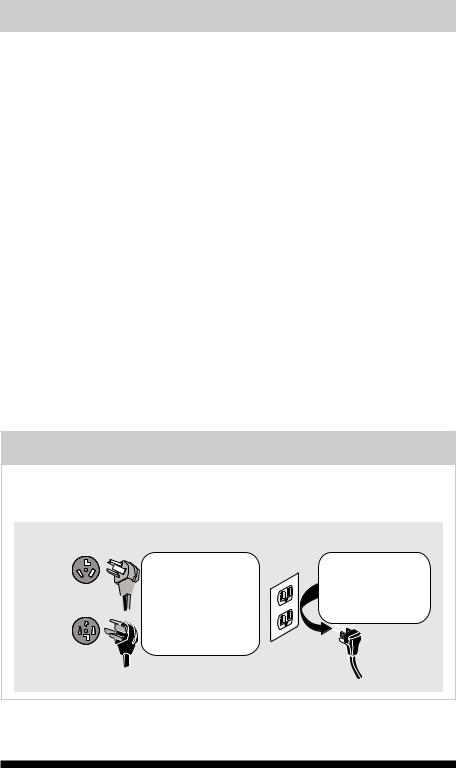
IMPORTANT SAFETY INSTRUCTIONS
Protect Children
•DO NOT allow children to play on or in the laundry center. Close supervision of children is necessary when the laundry center is used near children. As children grow, teach them the proper, safe use of all appliances.
•Destroy the carton, plastic bag, and other packing materials after the laundry center is unpacked. Children might use them for play. Cartons covered with rugs, bedspreads or plastic sheets can become airtight chambers.
•Keep laundry products out of children’s reach. To prevent personal injury, observe all warnings on product labels.
•Before the laundry center is removed from service or discarded, remove the washer and dryer doors to prevent accidental entrapment.
•Failure to comply with these warnings could result in serious personal injuries.
Prevent Injury
•To prevent shock hazard and assure stability during operation, the laundry center must be installed and electrically grounded by a qualified service person in accordance with local codes. Installation instructions are packed in the washer for
installer’s reference. Refer to INSTALLATION INSTRUCTIONS for detailed grounding procedures. If the laundry center is moved to a new location, have it checked and reinstalled by a qualified service person.
•To prevent personal injury or damage to the laundry center, the electrical power cord of a gas dryer must be plugged into a properly grounded and polarized 3-prong outlet. The third grounding prong must never be removed. Never ground the dryer to a gas pipe. DO NOT
use an extension cord or an adaptor plug.
•ALWAYS disconnect the laundry center from the electrical supply before attempting any service or cleaning. Failure to do so can result in electrical shock or injury.
•DO NOT use any type spray cleanser when cleaning dryer interior. Hazardous fumes or electrical shock could occur.
•To prevent injury, DO NOT reach into the laundry center while parts are moving. Before loading, unloading or adding items, push in the cycle selector knob
to stop the cycle. Allow the wash tub or dryer drum to coast to a complete stop before reaching inside.

 WARNING
WARNING
FIRE/ELECTRICAL SHOCK HAZARD
Avoid fire hazard or electrical shock. DO NOT use an adaptor plug or extension cord or remove grounding prong from electrical power cord. Failure to follow this warning can cause serious injury, fire, or death.
10-30R 3-wire
(fused 30 amp) 
14-30R 4-wire
(fused 30 amp)



240 v Electric Dryer
UL-approved service cord must be installed on electric dryers (not provided with unit except those manufactured for sale in Canada).
Grounding |
120 v Gas Dryer |
type wall |
Do not, under |
receptacle |
|
|
any circumstances, |
|
cut, remove, |
|
or bypass the |
|
grounding prong. |
Power cord with 3-prong grounded plug
5
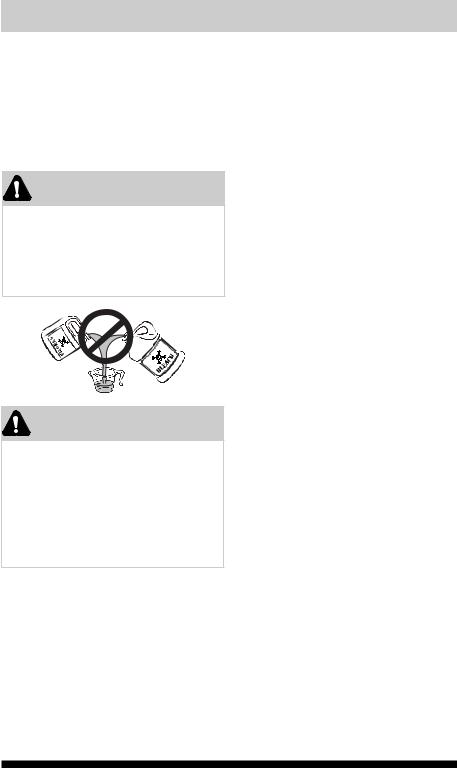
IMPORTANT SAFETY INSTRUCTIONS
•Follow package directions when using laundry products. Incorrect usage can produce poisonous gas - resulting in serious injury or death.
•DO NOT combine laundry products for use in 1 load unless specified on the label.
•DO NOT mix chlorine bleach with ammonia or acids such as vinegar.
WARNING
HARMFUL VAPOR HAZARD
DO NOT use or mix liquid chlorine bleach with other household chemicals such
as toilet cleaners, rust removers, acid or products containing ammonia. These mixtures can produce dangerous fumes which can cause serious injury or death.
CAUTION
The California Safe Drinking Water and Toxic Enforcement Act requires the Governor of California to publish a list of substances known to the state to cause cancer, birth defects or other reproductive harm, and requires businesses to warn customer of potential exposure to such substances. Included in this list are soot and carbon monoxide, both of which may be produced by the use of this product.
Prevent Injury and Damage to the Appliance
To prevent serious personal injury and damage to the laundry center:
•All repairs and servicing must be performed by an authorized service agent unless specifically recommended in this
Use & Care Guide. Use only authorized factory parts.
•DO NOT tamper with controls.
•DO NOT install or store the laundry center where it will be exposed to the weather. DO NOT operate the laundry center in below freezing temperatures.
•DO NOT install on carpet. Install laundry center on a solid floor. It may be necessary to reinforce the floor to prevent vibration or movement.
•DO NOT sit on, step on or stand on the laundry center. DO NOT rest heavy loads on top. The laundry center is not meant to support weight.
•To reduce the risk of electric shock, disconnect this appliance from the power supply before attempting any user
maintenance. Canceling a cycle or turning the power off at the console does not disconnect this appliance from the power supply.
•This laundry center is equipped with an electrical overload protector. The washer motor will stop if it becomes overheated.
•A thermal limiter switch automatically turns off the dryer motor in the unlikely event of an overheated situation. A service technician must replace the thermal limiter switch after correcting the fault.
•Failure to comply with these warnings could result in property damage or serious personal injuries.
6
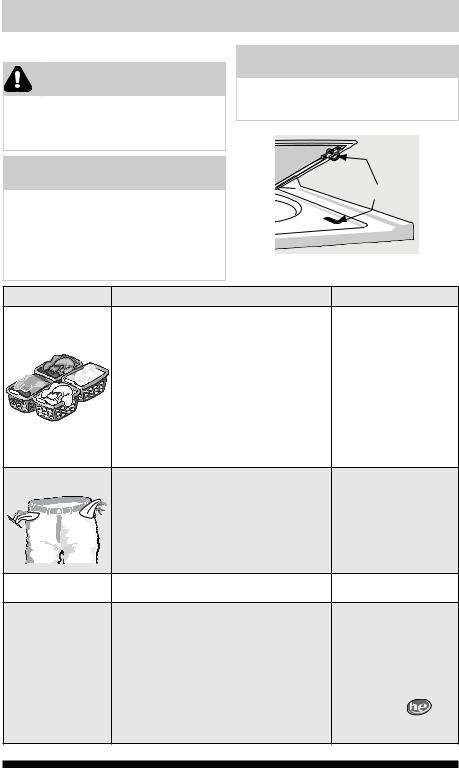
WASHER OPERATING INSTRUCTIONS
Operating Your Washer
WARNING
To reduce the risk of fire, electric shock or injury to persons, read these IMPORTANT SAFETY INSTRUCTIONS in this Use and Care Guide before operating your washer.

 WARNING
WARNING
DO NOT wash water-resistant and water-re- pellent type clothing or other materials. Failure to closely follow these instructions may result in abnormal vibrating and out-of-bal- ance conditions that could result in physical injury, property damage, and/or appliance damage

 CAUTION
CAUTION
To avoid serious personal injury, DO NOT operate washer if safety lid lock is missing, damaged or operating improperly.
Safety Lid Lock
STEPS |
TIPS |
IMPORTANT |
1. Sort laundry into |
• Sort by recommended cycle and water |
• DO NOT machine wash |
loads that can be |
temperature. |
items containing fiber- |
washed together. |
• Separate white, light, and colorfast items |
glass. Small particles |
|
from dark and non-colorfast items. |
of fiberglass left in |
|
• Separate items that shed lint from items |
drum may transfer to |
|
fabrics in other loads |
|
|
that attract lint. Casual, synthetic, knit, |
|
|
and cause skin irrita- |
|
|
and corduroy items will pick up lint from |
|
|
tion and/or damage to |
|
|
towels, rugs, and bedspreads. |
|
|
fabrics. |
|
|
• Separate heavily soiled items from lightly |
|
|
• DO NOT wash water- |
|
|
soiled items. |
|
|
• Separate lacy, sheer, loosely knit, or deli- |
resistant and water- |
|
repellent type clothing |
|
|
cate items from durable items. |
|
|
or other materials |
|
|
|
|
2. Prepare items for |
• Empty pockets. |
• Mend rips and tears to |
washing. |
• Brush off lint and dirt. Shake out rugs and |
prevent further dam- |
|
beach towels. |
age during washing. |
|
• Close zippers, fasten hooks, button but- |
• Turn knit items inside |
|
tons, and tie strings/sashes. Remove non- |
out to prevent pilling. |
|
washable trims and ornaments. |
|
|
• Place delicate and small items such as bras |
|
|
and hosiery in a mesh bag (not included). |
|
3. Pretreat stains |
• See Stain Removal Guide in this guide for |
|
and heavy soil. |
safe, successful stain removal instructions. |
|
4. Add liquid deter- |
• Detergent packs can also be used but may |
• Follow manufacturer’s |
gent or powder |
not fully dissolve in some cycles. |
instructions for recom- |
detergent to |
• The amount of detergent required de- |
mended amount of |
wash tub BEFORE |
pends on the type of detergent, load size, |
detergent. |
adding load. |
and water hardness. |
• Use a low-sudsing, |
|
|
high-efficiency deter- |
|
|
gent to prevent over- |
|
|
sudsing. |
|
|
• Look for the |
|
|
high-efficiency symbol |
|
|
on the detergent label. |
7

WASHER OPERATING INSTRUCTIONS
STEPS |
TIPS |
IMPORTANT |
5. Add other wash |
• Water conditioners, detergent boosters, |
• See product manufac- |
products to wash |
and enzyme products may be added with |
turer’s instructions. |
tub (if desired). |
detergent. |
|
6. Add bleach (if |
• If using liquid bleach, add to bleach |
• Follow manufacturer’s |
desired) before |
dispenser located in left front corner under |
instructions for recom- |
adding load. |
lid. Then add 1 cup (240 ml) water to flush |
mended amount of |
|
dispenser. |
bleach. |
|
• If using powdered bleach, add directly |
• DO NOT use powdered |
|
to the empty tub. |
bleach in bleach dis- |
|
|
penser. |
7. Add laundry load |
• Add items one at a time, each tightly |
• DO NOT overload the |
to wash tub. |
bunched into its own “ball” to allow benefi- |
washer. |
|
cial item interaction. Avoid loading items in |
|
|
a flat, laid-out fashion. |
|
|
• For best washing performance, dry load |
|
|
level should not be higher than the upper |
|
|
row of holes in the wash tub. |
|
|
• Combine large and small items in a load. |
|
|
Load small items first. Large items should |
|
|
not be more than half the total wash load. |
|
|
• When washing a single heavy item, add 1 |
|
|
or 2 towels to balance the load. |
|
8. Add liquid fabric |
• Add diluted fabric softener to the final |
• To prevent staining, |
softener to the |
rinse following fabric softener manufac- |
DO NOT pour liquid |
final rinse |
turer’s instructions. |
fabric softener directly |
(if desired). |
• A fabric softener dispensing ball can also |
on to wash load. |
|
be used. |
• Use of multi-product |
|
|
(detergent plus soft- |
|
|
ener) sheets or color- |
|
|
absorbing sheets NOT |
|
|
recommended. They |
|
|
could damage or dis- |
|
|
able your machine. |
9. Select washing |
• See Washer Cycle Selection and Washer |
• For best results, follow |
cycle and settings |
Cycle Settings on the following pages. |
fabric care label on |
for each load. |
• Unit will emit three short beeps to indicate |
items to be washed. |
|
it is in “wake” mode and ready to operate. |
|
10.Close the washer |
• See Washing Cycle Controls (Start, Pause, |
• Pausing a wash cycle |
lid and start the |
and Cancel) on the following pages. |
while washer is run- |
washer. |
• LED will light solid when washer is run- |
ning may affect per- |
|
ning. |
formance of the wash |
|
|
cycle. |
11. Remove items |
• For your safety, the lid is locked during the |
• DO NOT force open |
when the cycle is |
operation of the washer. |
the locked lid. The |
completed. |
• Once cycle has ended, wash tub will come |
wash tub can take sev- |
|
to a complete stop and door lid safety lock |
eral minutes to stop. |
|
will disengage with an audible double click. • For best results, follow |
|
|
• Place washed items in automatic dryer, |
fabric care label on |
|
line dry, or dry flat as directed by fabric |
items to be dried. |
Safety Lid Lock |
care label. Excess wrinkling, color transfer |
• For safety, the lid will |
|
or odors may develop in items left in the |
remain locked for 6 |
|
washer after the cycle has ended. |
minutes after the cycle |
|
|
ends. |
8
